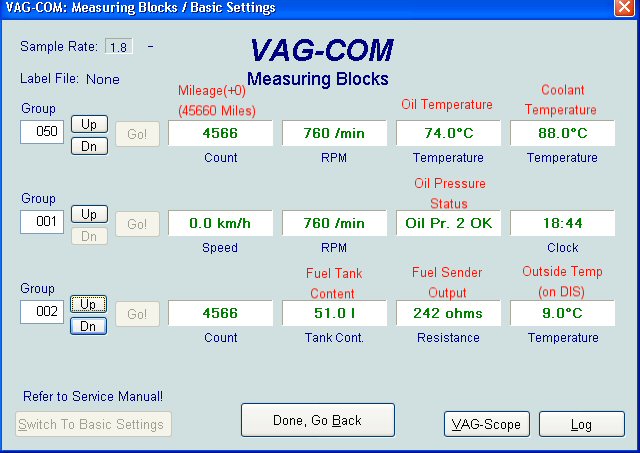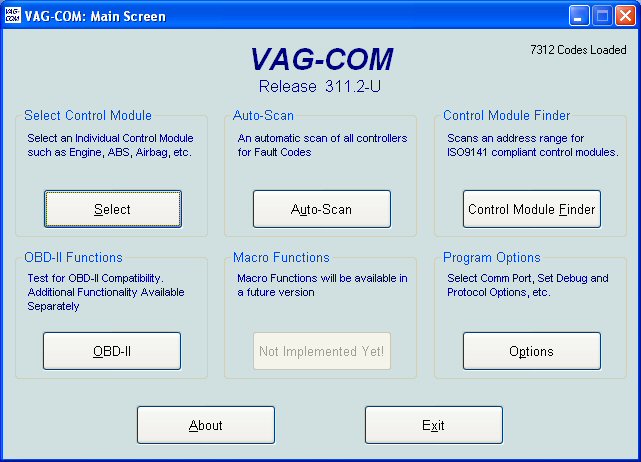
VAG-COM
View live sensor values in real time.
NOTE: all the information presented is personal opinion and
presented in good faith, nothing on these pages is validated or endorsed by Audi
and you should be aware that you could make changes that may disable features of
your car.
Always note down the original setting of anything you do and if you are not
confident with what you are doing then just don't do it.
YOU HAVE BEEN WARNED.
One of the neat features of VAG-COM is the ability to view and log various sensor readings in real time to see the output for diagnostic purposes.
Below are some examples of useful codes, click them:-
Timing Checks, Brake/Clutch/Cruise Switch Testing blocks
N75, Torque, Boost measuring blocks
Oil Temp/Pressure, Fuel Tank
Sender Check
Select the Control Modules

Typically most modules to log are under the "01" Engine option.
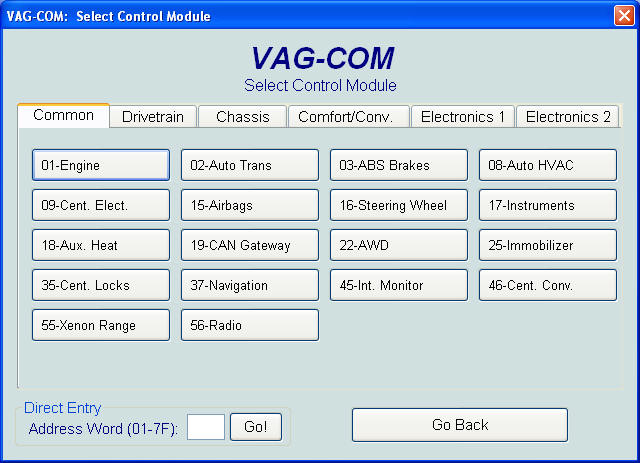
Select the "08" Measuring Blocks

020 for Timing checks, 066 to check
Brake/Clutch/Cruise Switches work
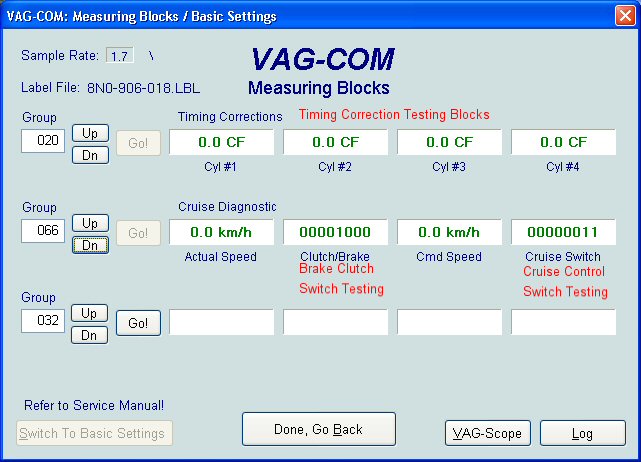
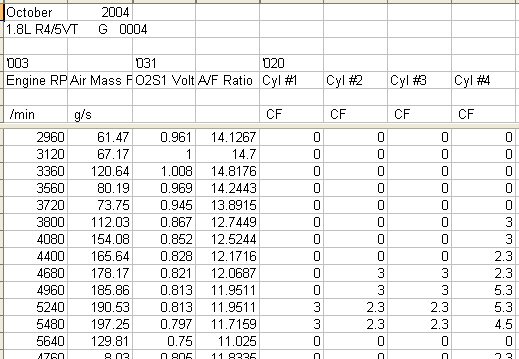
N75, Torque, Boost measurement
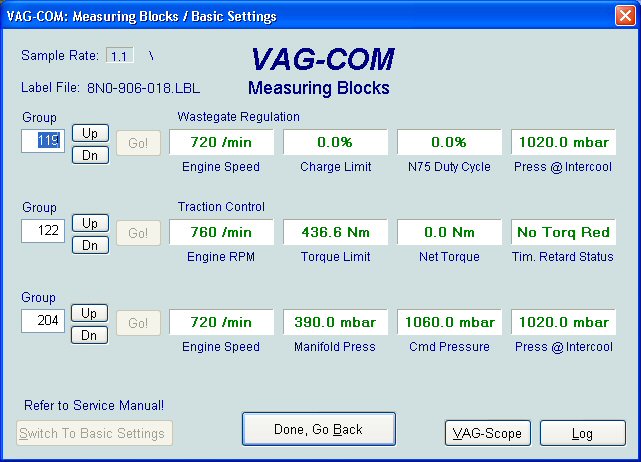
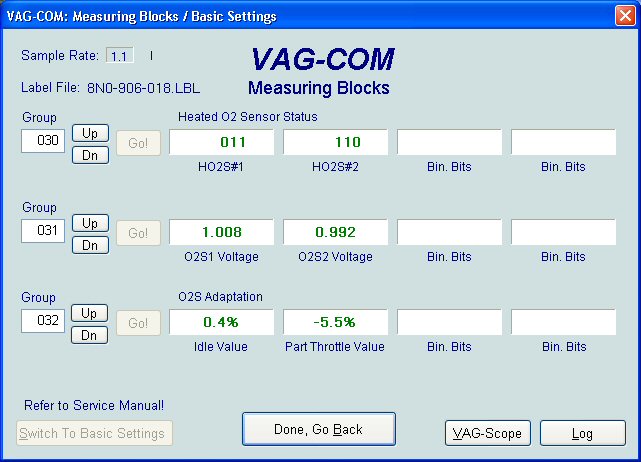
With Air fuel ratio, all you have is a voltage from the
lambda, 1V = 14.7 Stoich.
Use a spare column in the log to multiply the voltage by 14.7 and repeat
it down the column.
It will be easier to see if its running lean >14.7 or rich <14.7
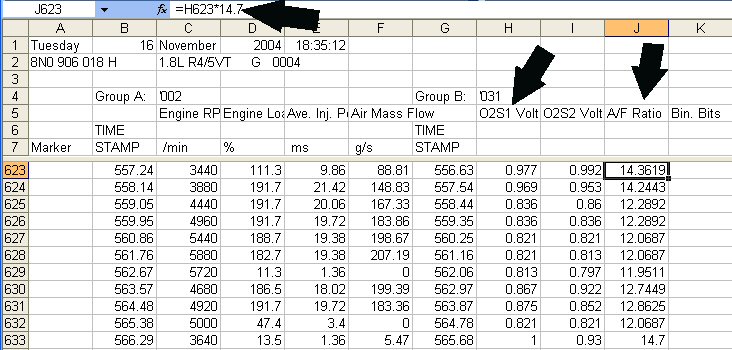
Some Background Info:-
A stoichiometric or ideal air/fuel ratio is 14.7:1 which means that there are 14.7 parts of air and one part fuel. The reaction of this mixture would produce emissions that contained only carbon dioxide and water, no fuel or oxygen would be left. At an air/fuel ratio of 14.7:1 the oxygen sensor voltage signal would read 1.0 volt on a narrow band sensor and 2.5 volts on a wide band sensor. If the air/fuel ratio mixture is rich (more fuel than air) than the sensor would read fewer volts or conversely if the mixture is lean (more air than fuel) the O2 sensor would read a larger voltage. If the air/fuel ratio is richer than 11.7:1 (0.8 volts) or leaner than 18:1 (1.22 volts) the engine won't run.
Sometimes it is desirable to run either leaner or richer than 14.7:1. If your goal is to produce maximal power output of the engine, as with forced induction, you'll want to run a richer air/fuel mixture around 12.5:1. The additional fuel in the cylinder will not burn. For example if we added 2 parts fuel to 14.7 parts air only one part of fuel will burn and do work. This is because there is not enough air to burn the second part of the fuel, remember that one part fuel combines with 14.7 parts air in a stoichiometric reaction. This unburnt fuel takes up valuable space in the cylinder but in forced induction applications cylinder temperatures can skyrocket and cause detonation. This extra fuel provides an anti-knock or cooling effect allowing for more power to be produced.
If you ran at an air/fuel ratio of 12.5:1 all the time you would really waste a lot of fuel but fortunately you don't need to. Normally it is only necessary to enrich the fuel mixture under load i.e. when boosting or engaging nitrous at all other times it is better to run a little leaner than 14:1. Running a lean air/fuel ratio will improve your gas mileage but be careful if you run too lean you will cause your combustion chambers to overheat. Running lean under power destroys engines because the combustion chambers get so hot that the pistons fall apart under the stress which is mostly due to pre-ignition. This will defiantly make for a bad day very fast.
The following is a lambda value table showing the Air/Fuel Ratios for different fuels
Instrument Cluster
Oil Temp./Pressure, Fuel Tank Sender Check
Select 17 Instruments
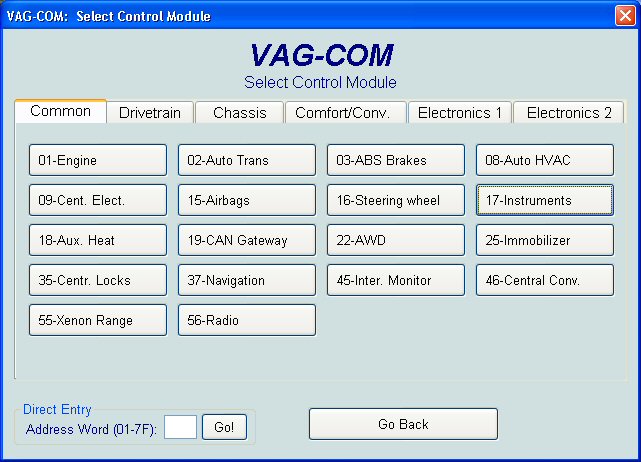
Select 08 Measuring blocks

050 - Oil Temperature
001 - Oil Pressure Status
002 - Fuel Tank Sender Check
